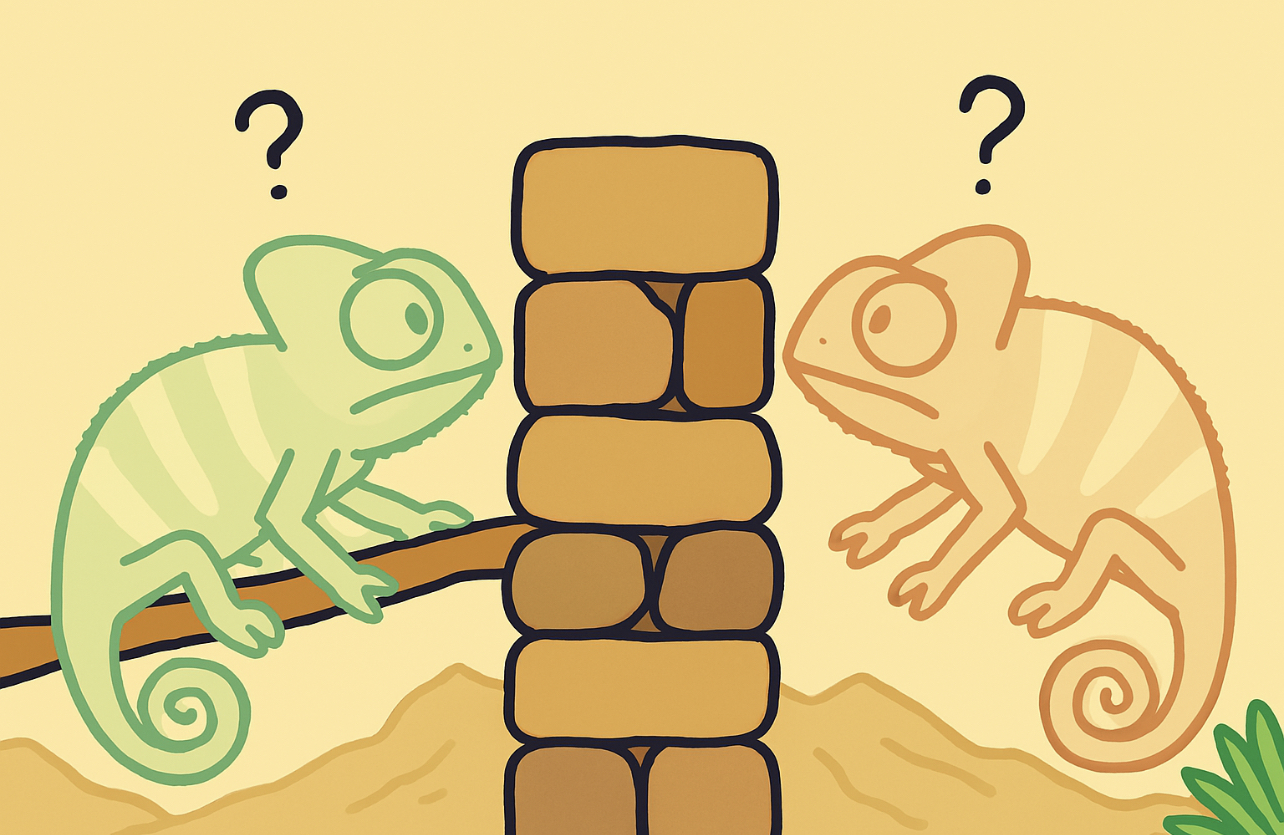Myth 78: “Chameleons Are Solitary Animals”

The Common Belief
It is often claimed that chameleons are intolerant, aggressive, and strictly solitary creatures. This assumption is based on observed spacing and defensive behaviors.
Reality: Chameleons are not solitary in the strict sense. They are social at a distance, equipped with complex communication systems that would be unnecessary if they lived in complete isolation.
The Logic of Distance Sociability
• Communication complexity: Body movements, postures, and color changes form a sophisticated language. Such signaling only makes sense in the presence of conspecifics.
• Ecological setting: Chameleons inhabit tree canopies with low food density. Their slow movement makes competition costly.
• Adaptive mechanism: Apparent "aggression" is actually a spacing strategy—ensuring each individual has enough territory to feed without conflict.
• Sex differences:• Males show stronger territorial displays, often misinterpreted as intolerance.
• Females are generally more tolerant, except during pregnancy, when they defend larger territories to secure resources for embryo development.
---
Social Behavior in Captivity
• Chameleons benefit from visual contact with conspecifics, provided it is at a safe distance.
• Keeping multiple specimens in separate enclosures across a room allows them to "talk" without stress.
• Enclosures should be equipped with hiding structures—plants, branches, visual barriers—so individuals can avoid constant exposure ("if I cannot see you, you are not there").
---
Risks of Isolation
When kept completely solitary, chameleons may exhibit behavioral deviations:
• Apathy (loss of interest in environment).
• Aggression (misdirected intolerance).
• Restlessness (pacing, clinging excessively to hands or cage structures).
---
Practical Recommendations
• Multiple specimens: Keep more than one chameleon, but never in the same enclosure; allow distant visual contact.
• Mirror trick: If no other chameleon is available, a mirror placed opposite the enclosure may simulate presence.• Monitor carefully: if signs of stress appear (dark coloration, hiding, agitation), remove the mirror immediately.
• Respect distance: Always prioritize spacing and hiding options to reduce stress.
---
Conclusion
Chameleons are not solitary animals. They are distance‑social creatures, masters of "social distancing" long before humans coined the term. Their elaborate language of colors and gestures is proof of their need for conspecific contact. Proper husbandry should respect this paradox: social, but never crowded.